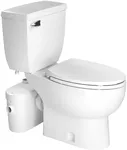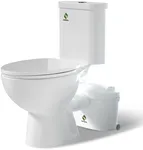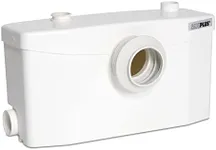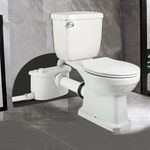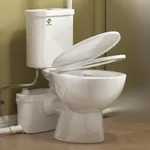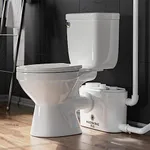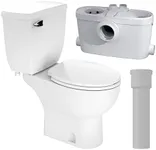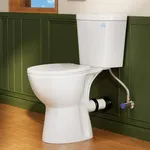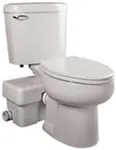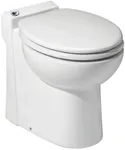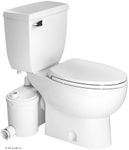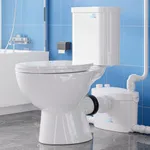Buying Guide for the Best Macerating Toilet
Choosing the right macerating toilet can be a bit overwhelming, but with the right information, you can make an informed decision that best suits your needs. Macerating toilets are a great solution for adding a bathroom in areas where traditional plumbing might be difficult or impossible. They work by grinding waste into a slurry and then pumping it away to the main drain line. Here are some key specifications to consider when selecting a macerating toilet, along with explanations to help you understand their importance and how to choose the best one for you.Pump PowerPump power is a measure of the macerating toilet's ability to grind waste and pump it to the main drain line. This is important because a more powerful pump can handle more waste and pump it further distances. Pump power is usually measured in horsepower (HP). For most residential applications, a pump with 0.5 to 1 HP is sufficient. If you need to pump waste a longer distance or handle higher volumes, you might need a more powerful pump. Consider your specific needs, such as the distance to the main drain line and the number of people using the toilet, to determine the right pump power for you.
Noise LevelNoise level refers to how loud the macerating toilet is when it operates. This is important because a quieter toilet can be more comfortable to use, especially in residential settings where noise can be a concern. Noise levels are typically measured in decibels (dB). Quieter models usually operate at around 50-60 dB, which is similar to the noise level of a normal conversation. If noise is a significant concern for you, look for models that are specifically designed to operate quietly. Consider where the toilet will be installed and how much noise you are willing to tolerate.
Installation FlexibilityInstallation flexibility refers to how easily the macerating toilet can be installed in various locations. This is important because one of the main advantages of macerating toilets is their ability to be installed in places where traditional plumbing is not feasible. Some models offer more flexibility in terms of where they can be installed, such as in basements, attics, or even under staircases. Look for models that offer easy installation and can be connected to existing plumbing with minimal modifications. Consider the specific location where you plan to install the toilet and choose a model that offers the necessary flexibility.
Water ConsumptionWater consumption refers to the amount of water the macerating toilet uses per flush. This is important for both environmental and cost reasons. Toilets with lower water consumption can help reduce your water bill and are better for the environment. Water consumption is usually measured in gallons per flush (GPF). Modern macerating toilets typically use between 1.0 and 1.6 GPF. If you are looking to save water, choose a model with lower GPF. Consider your water usage habits and any local regulations regarding water consumption when making your decision.
Bowl Shape and SizeBowl shape and size refer to the design and dimensions of the toilet bowl. This is important for comfort and space considerations. Toilet bowls come in various shapes, such as round and elongated. Elongated bowls are generally more comfortable for adults, while round bowls take up less space and may be better suited for smaller bathrooms. The size of the bowl can also affect the overall footprint of the toilet. Consider the available space in your bathroom and your personal comfort preferences when choosing the bowl shape and size.
Maintenance and DurabilityMaintenance and durability refer to how easy the macerating toilet is to maintain and how long it is expected to last. This is important because a well-maintained and durable toilet will save you time and money in the long run. Look for models with features that make maintenance easier, such as removable access panels and self-cleaning mechanisms. Durability can be assessed by looking at the materials used in construction and the reputation of the manufacturer. Consider how much maintenance you are willing to perform and how long you expect the toilet to last when making your decision.

